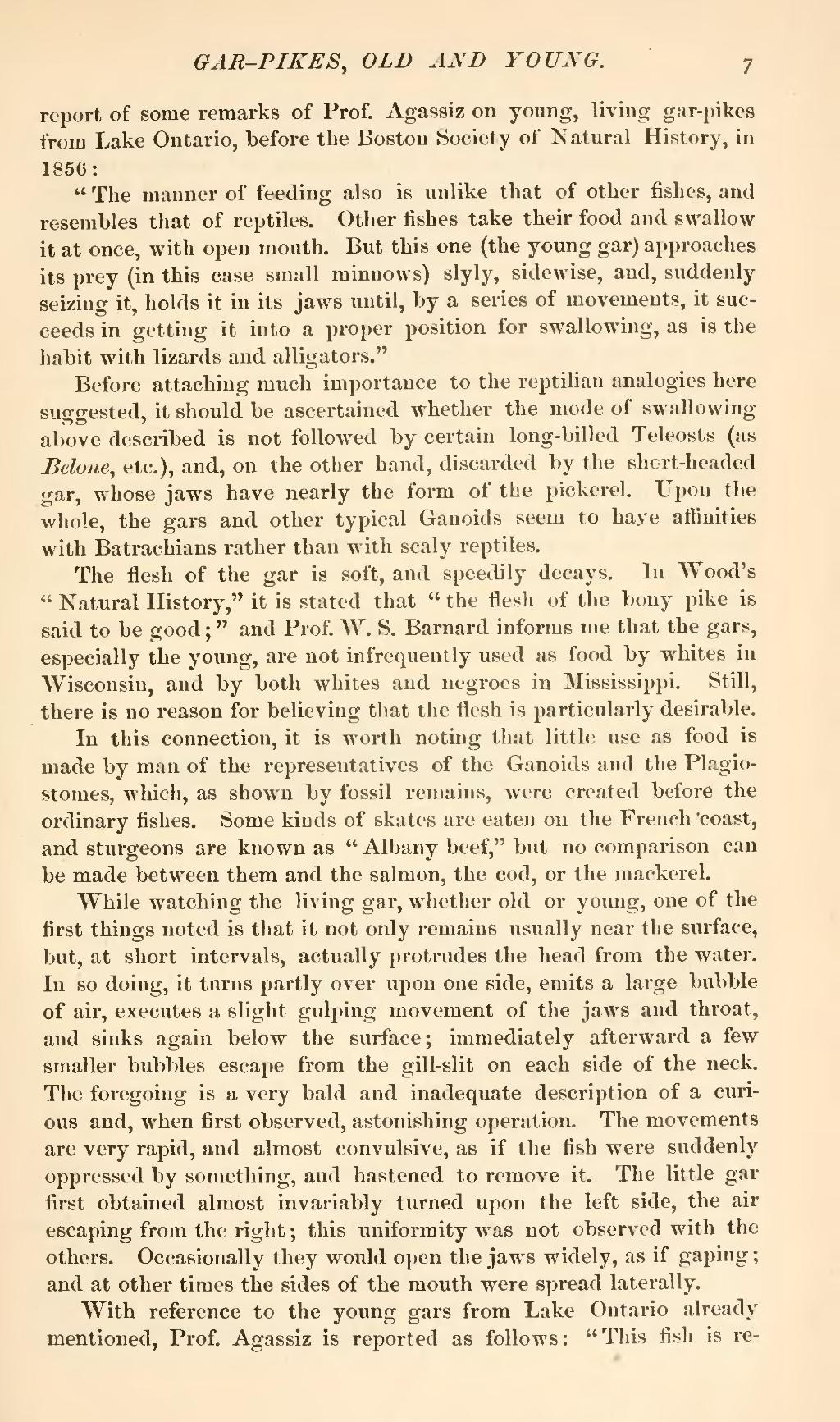report of some remarks of Prof. Agassiz on young, living gar-pikes from Lake Ontario, before the Boston Society of Natural History, in 1856:
"The manner of feeding also is unlike that of other fishes, and resembles that of reptiles. Other fishes take their food and swallow it at once, with open mouth. But this one (the young gar) approaches its prey (in this case small minnows) slyly, sidewise, and, suddenly seizing it, holds it in its jaws until, by a series of movements, it succeeds in getting it into a proper position for swallowing, as is the habit with lizards and alligators."
Before attaching much importance to the reptilian analogies here suggested, it should be ascertained whether the mode of swallowing above described is not followed by certain long-billed Teleosts (as Belone, etc.), and, on the other hand, discarded by the short-headed gar, whose jaws have nearly the form of the pickerel. Upon the whole, the gars and other typical Ganoids seem to have affinities with Batrachians rather than with scaly reptiles.
The flesh of the gar is soft, and speedily decays. In Wood's "Natural History," it is stated that "the flesh of the bony pike is said to be good;" and Prof. W. S. Barnard informs me that the gars, especially the young, are not infrequently used as food by whites in Wisconsin, and by both whites and negroes in Mississippi. Still, there is no reason for believing that the flesh is particularly desirable.
In this connection, it is worth noting that little use as food is made by man of the representatives of the Ganoids and the Plagiostomes, which, as shown by fossil remains, were created before the ordinary fishes. Some kinds of skates are eaten on the French "coast, and sturgeons are known as "Albany beef," but no comparison can be made between them and the salmon, the cod, or the mackerel.
While watching the living gar, whether old or young, one of the first things noted is that it not only remains usually near the surface, but, at short intervals, actually protrudes the head from the water. In so doing, it turns partly over upon one side, emits a large bubble of air, executes a slight gulping movement of the jaws and throat, and sinks again below the surface; immediately afterward a few smaller bubbles escape from the gill-slit on each side of the neck. The foregoing is a very bald and inadequate description of a curious and, when first observed, astonishing operation. The movements are very rapid, and almost convulsive, as if the fish were suddenly oppressed by something, and hastened to remove it. The little gar first obtained almost invariably turned upon the left side, the air escaping from the right; this uniformity was not observed with the others. Occasionally they would open the jaws widely, as if gaping; and at other times the sides of the mouth were spread laterally.
With reference to the young gars from Lake Ontario already mentioned. Prof. Agassiz is reported as follows: "This fish is re-
